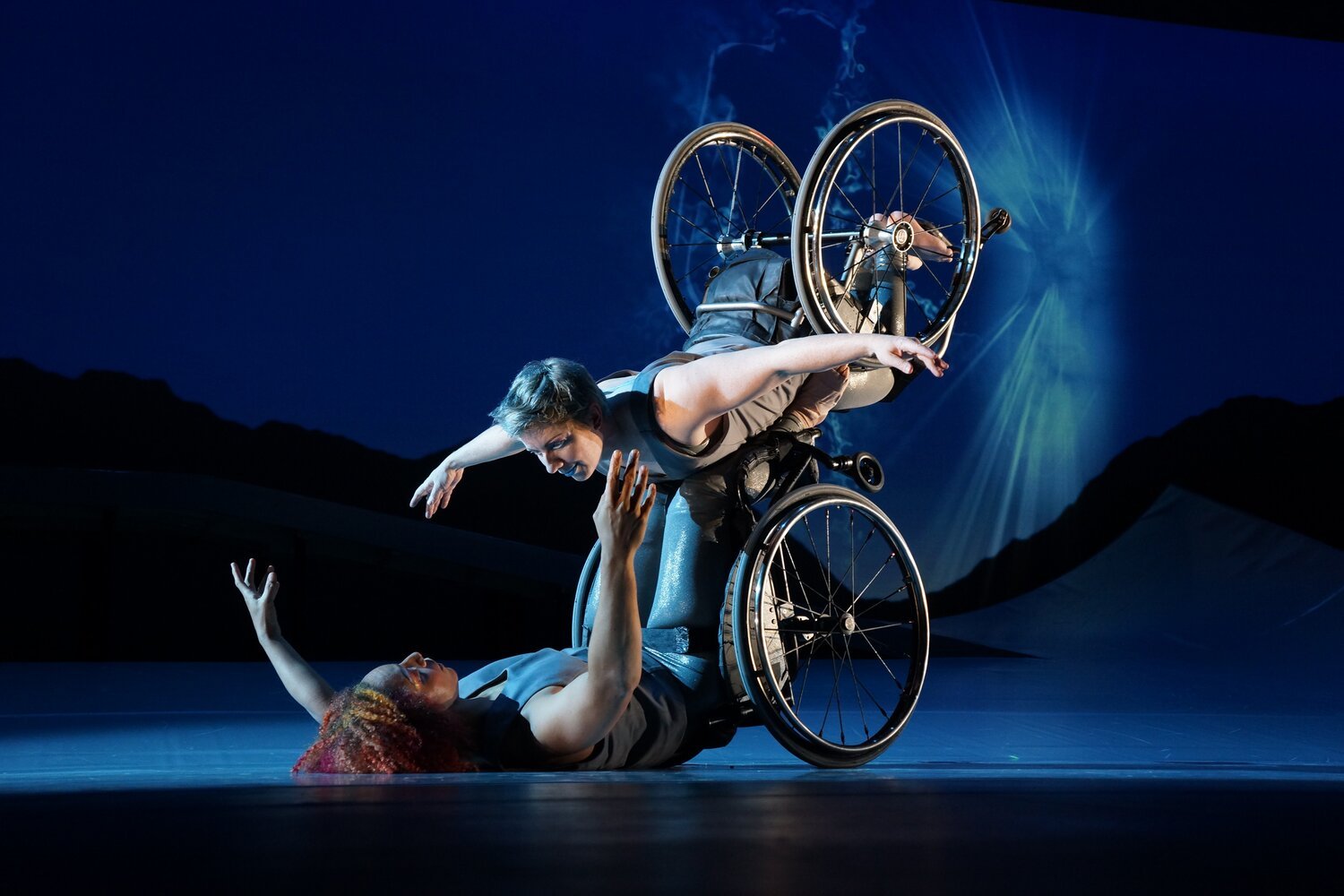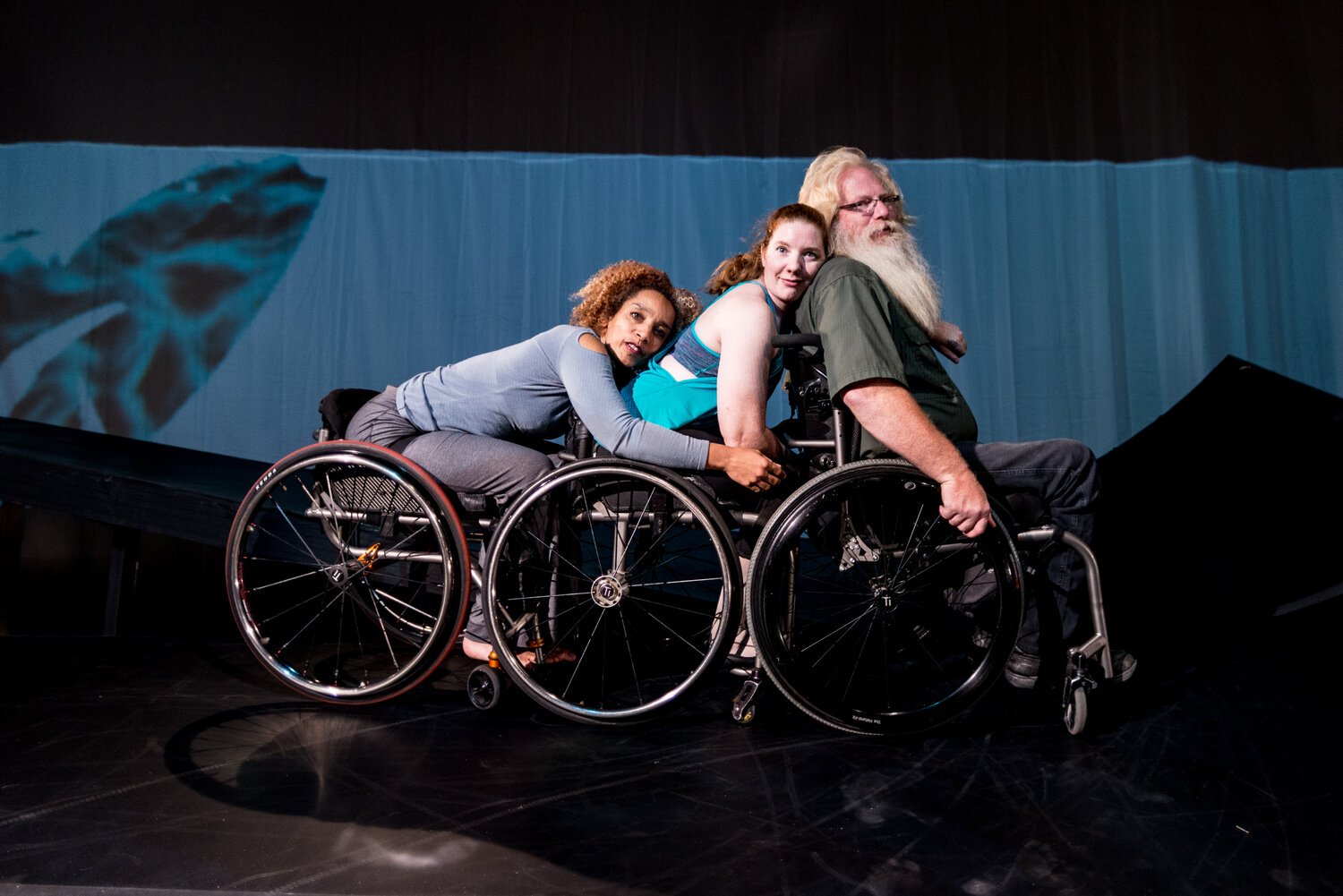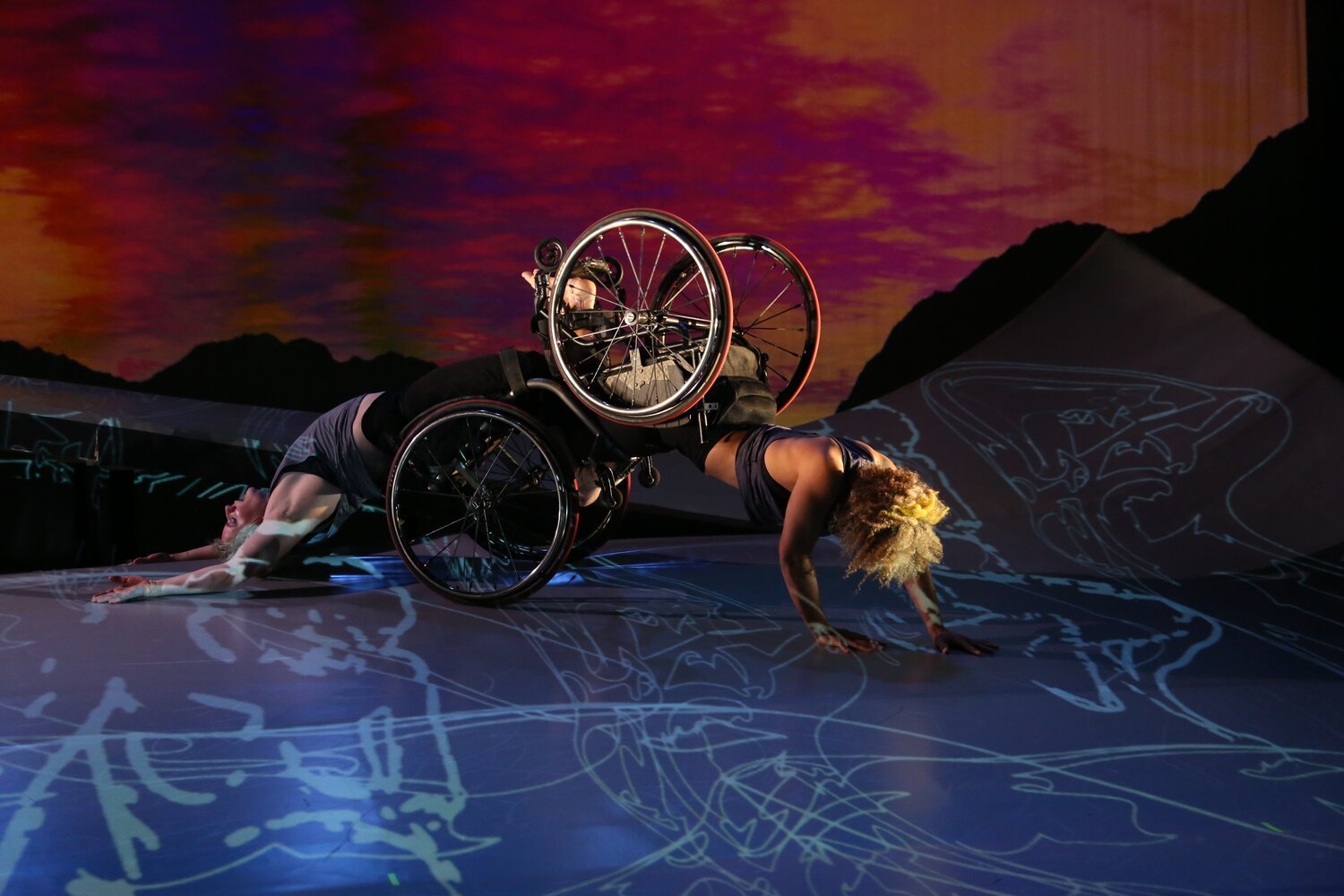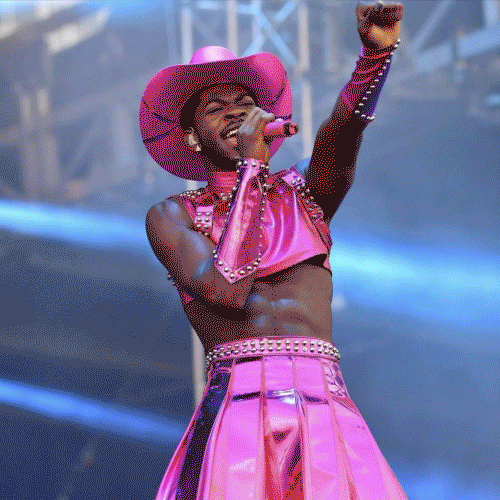Disability arts and activism collide with Kinetic Light's DESCENT
PHOTO BY JAY NEWMAN / BRITT FESTIVAL.
Dance is an occasion for play, exploration, and storytelling, but how often does it give us all that and more? What if dance could interrogate classically held notions of beauty, love, liberation, and the human form?
Kinetic Light is an innovative disability art ensemble uniquely poised to offer such an experience with their latest work, DESCENT. Drawing on the work of modern sculptor Auguste Rodin, DESCENT is a movement based reimagining of Venus and Andromeda entwined in a queer, disabled, interracial love story.
As choreographer and dancer, Alice Sheppard fully realizes Andromeda as a protagonist. Her portrayal reclaims Andromeda’s white washed history as a Black woman while centering Andromeda as the locus of change. The inherent narrative of DESCENT revolves around Andromeda’s liberation.
In the opening scene, Sheppard perches on the highest point of an architectural ramp, in reference to the myth beginning with Andromeda chained to a rock awaiting her death. The ramp’s high point is located in the back right corner and makes a steep slope down and forward, until it splits and rises again more gradually along its back portion, creating a gently undulating shape reminiscent of a wave breaking. From this point, Sheppard dances without her wheelchair, crouching, twisting, rolling along the ramp’s surface in precise movements.
Laurel Lawson, embodying Venus with short, blue green hair, emerges from the split in the ramp and pulls Andromeda down into her underwater world. Dazzling, intricate light projections, designed by disabled artist Michael Maag, fluidly shift settings and give the ramp supportive vibrancy throughout. Lawson, as the goddess of love and beauty enticing Andromeda, moves with buoyancy along the elevated surface of the ramp sans wheelchair.
PHOTO BY ROBBIE SWEENY
The pair ascends into a new realm, backdropped by a resplendent purple nebula projection, but perhaps most importantly indicated by their wheelchairs now present. One wheelchair appears in the same spot where we met Andromeda, appearing precarious in its slant. Sheppard, Lawson, and the second wheelchair balance the composition in the back left corner of the ramp, where the slope levels to a flat surface.
In this space, magic happens as the wheelchair is integrated as part of the dancers’ form. Lawson performs physically impressive feats like dangling off the edge of the ramp, and later careening down the slope and banking sharply on the other side of the split, continuing her path as smoothly as water gliding over the same surface. She displays delicate moments just as deftly, as when she tenderly peers through the spokes of her wheelchair.
Sheppard is a vision of talent and trust. In a grip with Lawson, she tilts backwards until lying on her back, then allows her dance partner to balance on her footplate, all arms extended in wide embrace. In due course, she assumes the exact shape for Lawson to ride over her supine form. In the crescendo of this movement, Lawson leads Sheppard to the spot where her wheelchair has been patiently waiting, an echo of her crouched form in the opening scene, and Sheppard freewheels toward the front of the ramp. Venus liberates Andromeda from her destiny, sharing a language of movement and cementing their connection.
PHOTO BY MANCC / CHRIS CAMERON.
Act 1 ends with both dancers in sync, rolling up and then backwards on the gentle pitch of the front section of the ramp. The sound of wheels traversing the ramp morphs into ocean waves crashing, which lingers even after the dancers’ trajectory slows to a halt. Act 2 is a visual feast of technical skill and raw emotion that culminates the narrative.
The wheelchair is freedom. The ramp is form. Dance is a vehicle for the body to express the gamut of the human condition, yet it is the synchrony between dancers, wheelchairs, and the ramp, that is liberation. Light, sound, description, and narrative enhance the immersion, suspend our disbelief, but in the end, DESCENT is about mythmaking. It gives us an opportunity to envision marginalized bodies as sites of the imagination, as play embodied, as goddesses of desire and personal power. As Andromeda’s racial history is restored, so too is myth in the hands of the storyteller. How powerful it is to shape the idol in one’s own image.
Archive
- February 2025
- November 2024
- October 2024
- September 2024
- August 2024
- July 2024
- June 2024
- May 2024
- April 2024
- October 2023
- July 2023
- June 2023
- May 2023
- April 2023
- March 2023
- February 2023
- June 2022
- April 2022
- March 2022
- January 2022
- December 2021
- October 2021
- September 2021
- August 2021
- July 2021
- June 2021
- May 2021
- April 2021
- March 2021
- February 2021
- January 2021
- December 2020
- October 2020
- September 2020
- August 2020
- July 2020
- June 2020
- May 2020
- April 2020
- March 2020
- February 2020
- January 2020
- December 2019
- November 2019
- October 2019
- September 2019
- August 2019
- July 2019
- June 2019
- May 2019
- April 2019
- March 2019
- February 2019
- January 2019
- December 2018
- November 2018
- October 2018
- September 2018
- August 2018
- July 2018
- June 2018
- May 2018
- April 2018
- March 2018
- February 2018
- January 2018
- December 2017
- November 2017
- October 2017
- September 2017
- August 2017
- July 2017
- June 2017
- May 2017
- April 2017
- March 2017
- February 2017
- January 2017
- December 2015
- November 2015
- October 2015
- September 2015
- August 2015
- July 2015
- June 2015
- May 2015
- April 2015










